We arrived in Charleston today just in time to join a walking tour of this historic southern city. As part of our road trip through the Southern USA, Charleston was one of the cities we were really looking forward to visiting. It has received a lot of recent media accolades including: the World’s Best City by Travel +Leisure, the #1 city in the USA by Conde Nast Traveler and we’ve seen reports everywhere of the fantastic, Low Country food in Charleston. So from a foodie point of view we are looking forward to this town!
 Why is Charleston known as “The Holy City”?
Why is Charleston known as “The Holy City”?
The original and historic walled city of Charleston is relatively small, about 4-5 square miles in total. The streets are named after prominent people originally living on the street. And it is filled with historic churches.
Let’s start with the churches. Charleston is known as the Holy City. With over 400 churches in town today you might think this is the source of Charleston’s nickname, but it is actually a historic nickname. Charleston’s first settlers decided this would be a city where people could worship freely, and this was very unusual at the time, the early 1600’s. Most settlements were of homogeneous religious followers and in most of Europe there was no freedom of religion. This attracted immigrants from all over the world and practitioners of all types of religions.
Today, church is still a large and important part of the social scene in Charleston. Many families attend the same church and still sit in the family pew as they have for generations.
St. Michael’s Church, which has the highest spire in town, also serves as the height limit for any building: no building can be higher than the spire of St. Michael’s. A look at many of the church graveyards tell the history of the city.
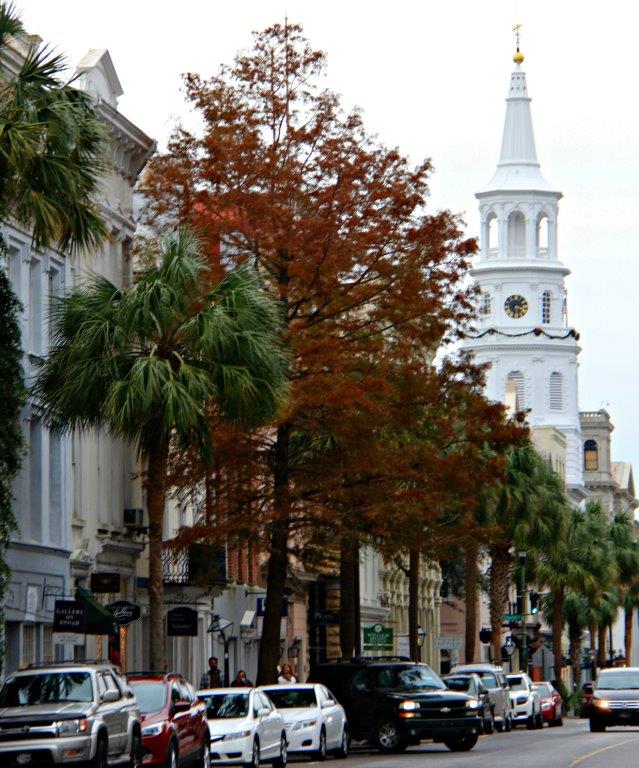
Charleston’s Role in US History
There was considerable wealth in Charleston, in large part due to its role as an important port city. Originally founded as Charles Town in 1670, by 1680 it was the 5th largest town in North America.
It became a wealthy port with many prominent merchants trading in cotton, indigo and agricultural products, including rice.
It has survived the Revolutionary War, the Civil War and numerous outbreaks of disease, flooding and earthquakes. Located on a prominent fault line, many of Charleston’s historic buildings show evidence of large earthquakes- you can see the “pins” put into the building to strengthen and straighten them.
There are several old inns and bars throughout the city. Charleston was one of the few cities never enforcing Prohibition, so they have been continuously serving alcohol for hundreds of years.
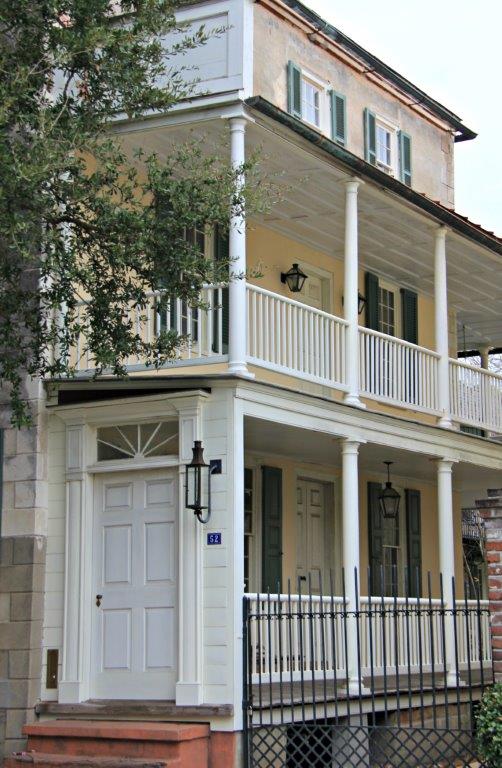
Charleston’s Charming Architecture
In addition to the many churches, the architecture of the residences tells the story of history. The largest intact tract of pre-Revolutionary homes is in Charleston (and it is not very long). Several antebellum homes line the waterfront. These historic mansions were many of the plantation owners’ “city” homes.
Most of the homes have a doorway from the street leading to a long porch running the length of the house (which contains the actual front door to the house). These long, thin houses are situated to both capture the breeze from the water and limit the direct sunlight. Some of the gardens are simply amazing. The wide variety of plants growing in Charleston’s micro-climate makes for some stunning displays and something is in bloom all year round.
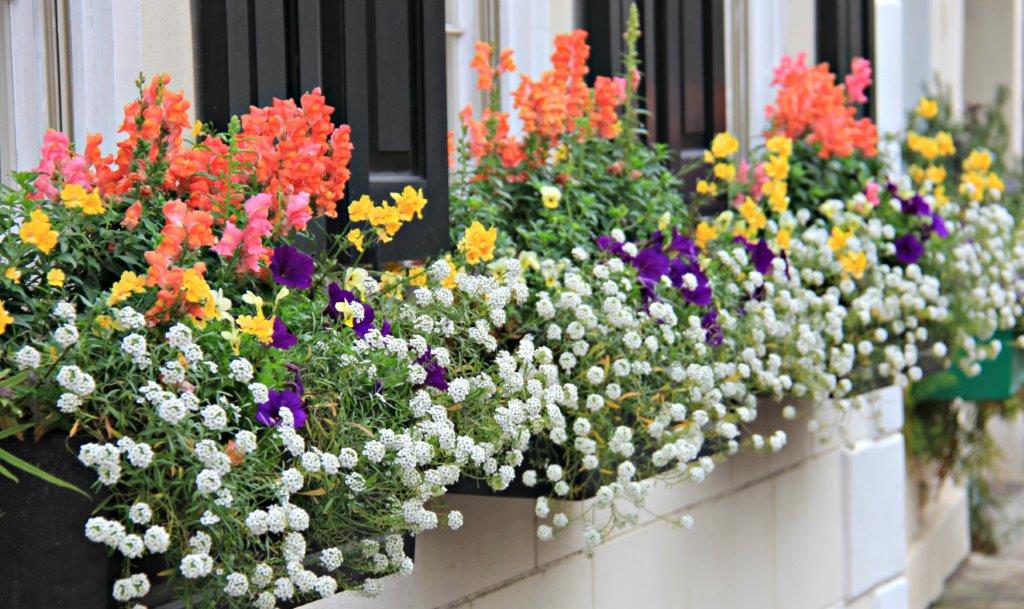
The historic gas street lights and front porch lights still burn in the evening, casting a soft glow about the town. The use of wrought iron on the porches and doors reminds me of New Orleans.
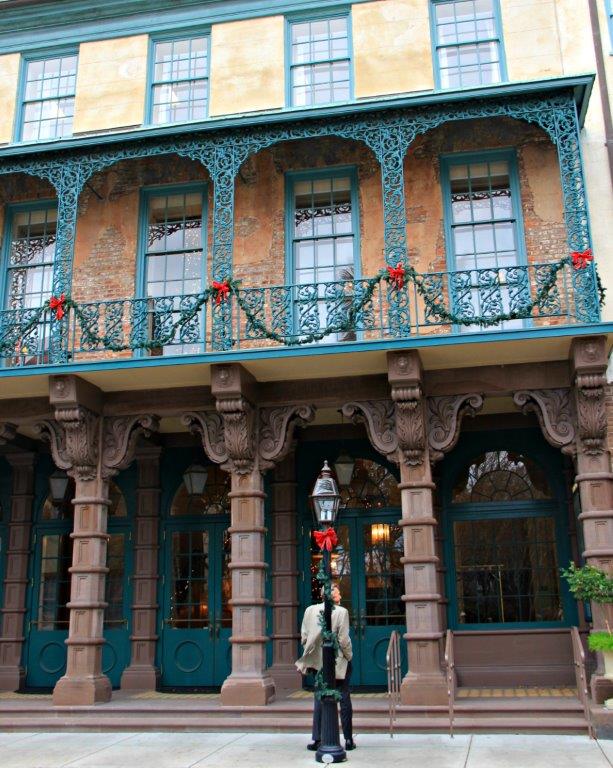
Wandering the streets, you find a long narrow lane way known for its role in many duels in years past. Dueling was a matter of honor with strict rules and customs.
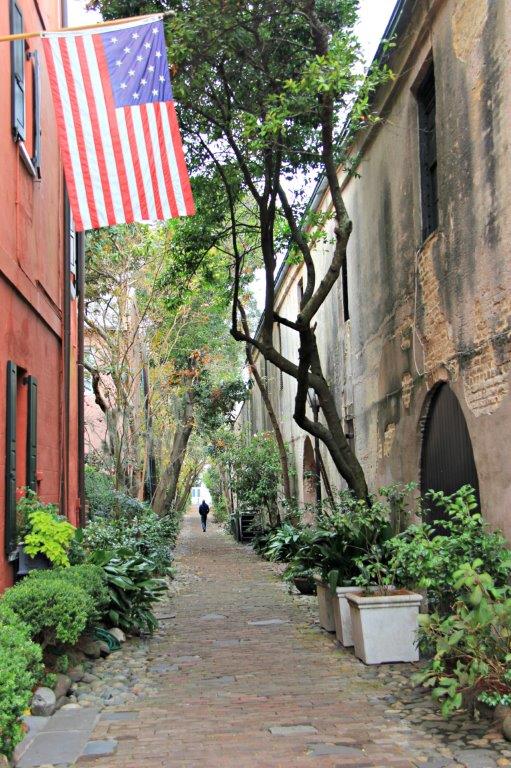
Make sure to visit the historic City Market. Here you will find lots of arts and crafts from local makers including the famous sweetgrass baskets; native to this area. Originally these baskets were used in the harvesting of rice. Today, they make a lovely souvenir of your visit.
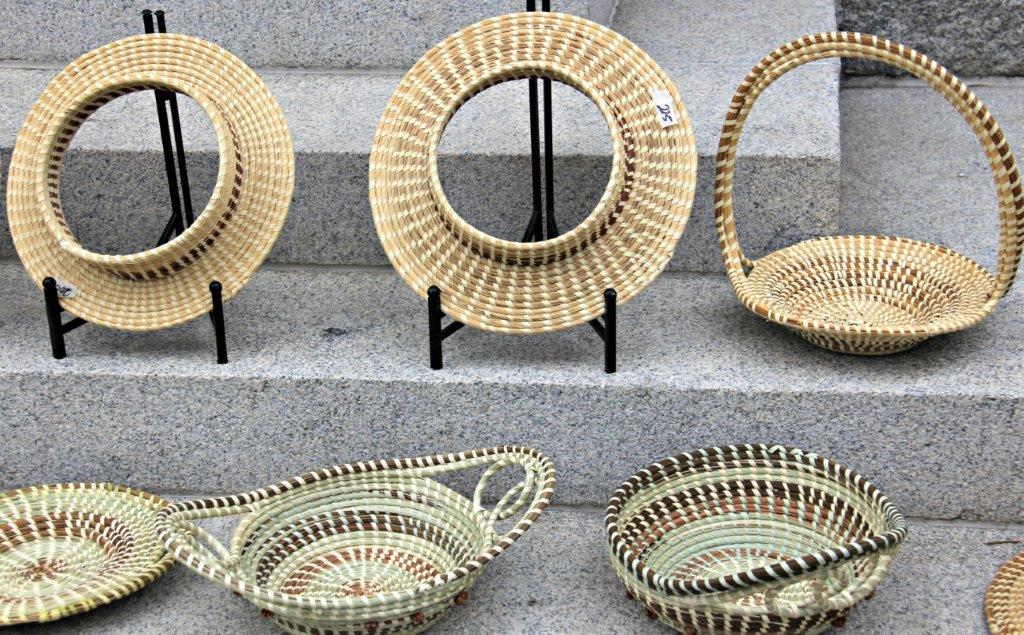
And of course, there is the food. Charleston is part of an area known as the Low Country, a huge tract of land barely laying above sea level. The history of the food was just fascinating.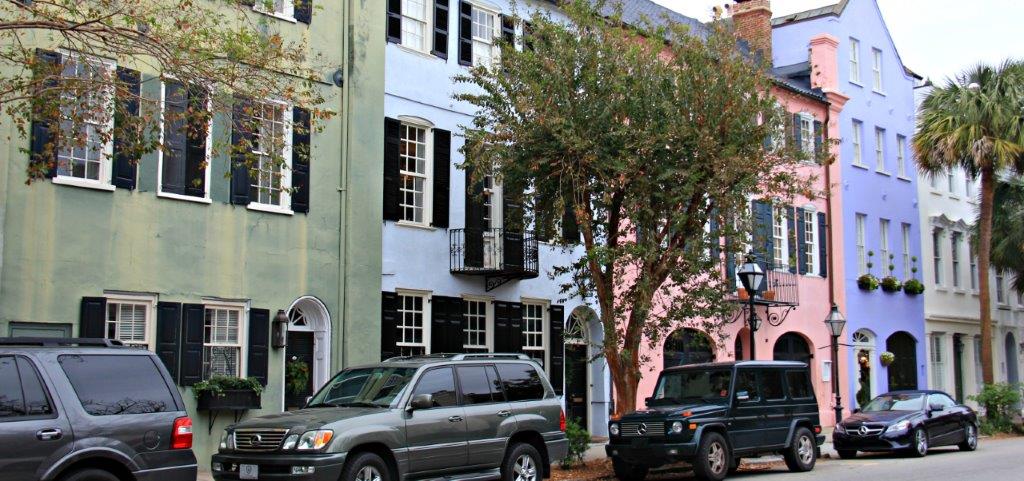
Pre-Revolutionary War homes
More about Charleston
Our historic walking tour was with Charleston Strolls. It was most informative and full of stories about the early settlers and the historic buildings of Charleston. This entertaining walking tour is a great way to learn more about this historic city of the American South.
If you would like to learn more about Charleston, a couple of books/movies you might enjoy:
(These are affiliate links for Amazon, which means we may earn a small commission (at no additional cost to you) for your purchase of our recommended items)
South of Broad by Pat Conroy
Blue Roots by Roger Pinckney
Gone with the Wind by Margaret Mitchell
 |
 |
 |
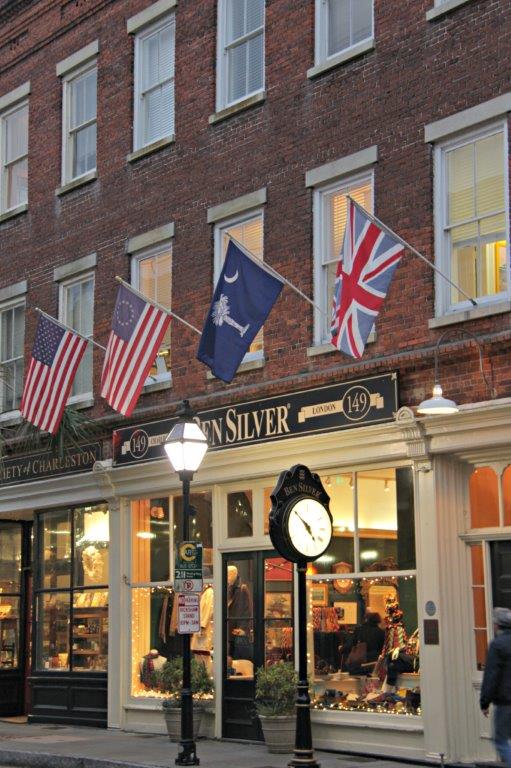
Thanks to the Charleston Area Convention and Visitors Bureau for their support in visiting the local sites of Charleston. As always, the opinions expressed on Compass & Fork are our own.

Laura
We were just in Charleston last month and absolutely loved it! We ate really well (maybe TOO well), and loved exploring the beautiful, walkable, city. Can’t wait to get back! Nice review and pictures!
Editor
I can absolutely agree with everything you have said, especially the food. The shopping there was also excellent but just wandering around the streets we discovered many hidden delights. So much better than whizzing around in the car.